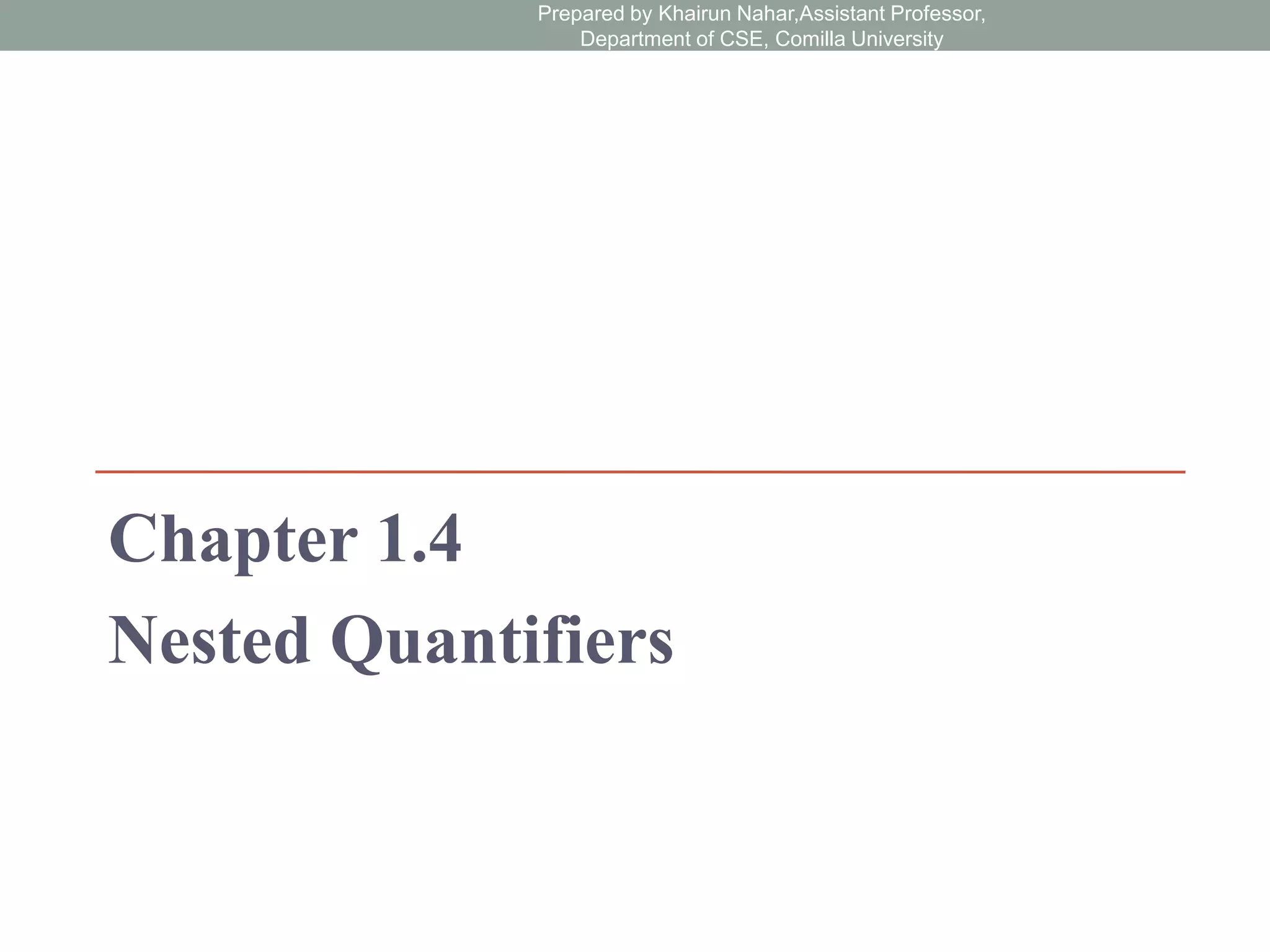This document discusses predicates and quantifiers. It defines universal and existential quantifiers, as well as the uniqueness quantifier. It also covers precedence of quantifiers, logical equivalences involving quantifiers, and De Morgan's laws for quantifiers. Examples are provided to demonstrate how to negate quantified expressions and use De Morgan's laws to determine logical equivalences.






![Proof of 1st Part:
Suppose that ∀x (P(x) Q(x)) is true. This means that if a is in the
domain, then P(a) Q(a) is true. Hence, P(a) is true and Q(a) is true.
Because P(a) is true and Q(a) is true for every element in the
domain, we can conclude that ∀x P(x) and ∀x Q(x) are both true.
This means that ∀x P(x) ∀x Q(x) is true.
Proof of 2nd Part:
Suppose that ∀x P(x) ∀x Q(x) is true. It follows that ∀x P(x) is
true and ∀x Q(x) is true. Hence, if a is in the domain, then P(a) is
true and Q(a) is true [because P(x) and Q(x) are both true for all
elements in the domain, there is no conflict using the same value of a
here].
It follows that for all a, P(a) Q(a) is true. It follows that ∀x (P(x)
Q(x)) is true. We can now conclude that
∀x (P(x) Q(x)) ≡ ∀x P(x) ∀x Q(x)
Prepared by Khairun Nahar,Assistant Professor,
Department of CSE, Comilla University](https://image.slidesharecdn.com/lecture6chapter1lesson1-230217064304-f96c08e7/75/Lecture_6_Chapter_1_Lesson_1-3-Lesson-1-4-pptx-7-2048.jpg)








![Example 6:
Show that, ¬∀x (P(x)→ 𝐐(𝐱)) ≡ ∃𝐱 (P(x)¬𝑸(𝒙)).
Solution: According to De Morgan's 1st Law:
¬∀x P(x) ≡ ∃𝐱¬ P(x).
¬∀x (P(x)→ 𝐐(𝐱)) ≡ ∃𝐱¬ (P(x)→ 𝐐(𝐱))
≡ ∃𝐱 (P(x)¬𝐐(𝐱)) [¬(𝐴 → 𝐵) = 𝐴¬𝐵)]
[Proved]
Prepared by Khairun Nahar,Assistant Professor,
Department of CSE, Comilla University](https://image.slidesharecdn.com/lecture6chapter1lesson1-230217064304-f96c08e7/75/Lecture_6_Chapter_1_Lesson_1-3-Lesson-1-4-pptx-16-2048.jpg)







